Repeated ear infections turned out to be leukaemia
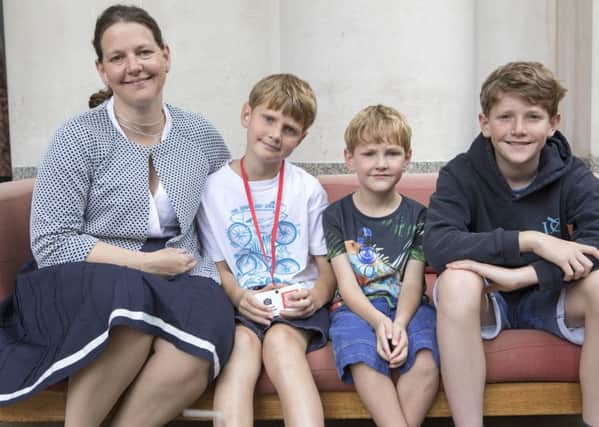

Sitting by her son Rory’s hospital bedside as he lay there poorly after being diagnosed with leukaemia, a heavily pregnant Sue Mackintosh suddenly went into labour.
It was a traumatic time for the family but their strength and determination, as well as the inspiration, they drew from courageous Rory helped them through the difficult ordeal.
Advertisement
Hide AdAdvertisement
Hide AdSue, 45, who is married to Phil and lives in Whittle-le-Woods, near Chorley, with children Leo, 12, Rory, nine and Huw, six, says while life threw them some tricky times, they had no choice but to get on with things and keep going.
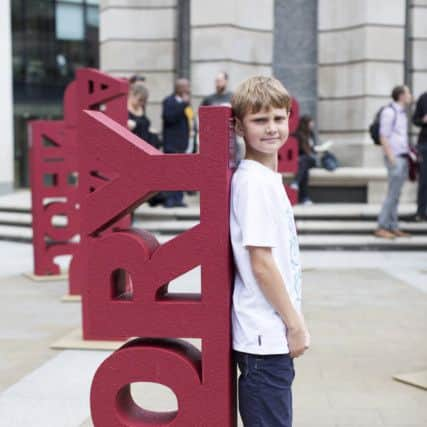

Sue, a solicitor, explains: “Rory was diagnosed in 2011 and was only three-years-old at the time. He’d been completely healthy before then but he just became a bit run-down and kept suffering from repeated ear infections so we went back and forth to our GP for about a month.
“Rory was then referred to the paediatric unit where they did some blood tests and told us it was cancer. I was 24 weeks pregnant with Huw when Rory was diagnosed.
“I was actually sitting on the ward with Rory at Manchester Children’s Hospital where he was having treatment when I went into labour. Luckily, St Mary’s Hospital was only next door so I waddled over. It was unexpected but you just get on with it.
Advertisement
Hide AdAdvertisement
Hide Ad“The end result was that we had a healthy baby with Huw and Rory came home in remission. The outcome was positive on both sides.
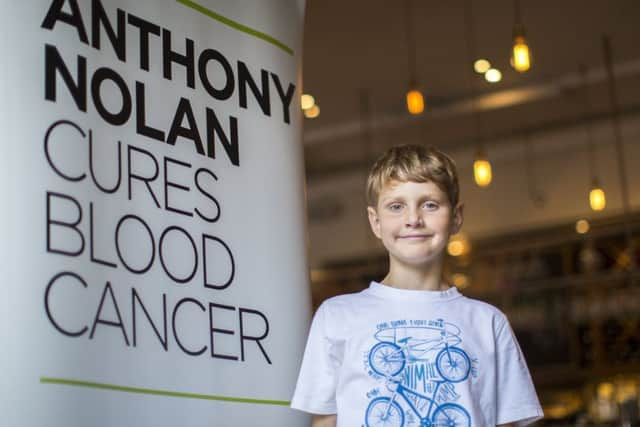

“Children pick up on how you are feeling so you have to keep positive. Rory came to visit his new little brother the following day. We took inspiration from Rory as he always had a smile on his face despite everything he was going through.”
Rory, now nine, was diagnosed with acute myeloid leukaemia, a rare form of blood cancer.
He came through with his treatment and went into remission. However, six months later, he relapsed.
Advertisement
Hide AdAdvertisement
Hide AdRory’s best chance of a cure was a bone marrow transplant which involved eradicating his diseased cells with chemotherapy and replacing them with new cells. In spring 2012, Rory had further chemotherapy and then underwent his bone marrow transplant in June 2012.
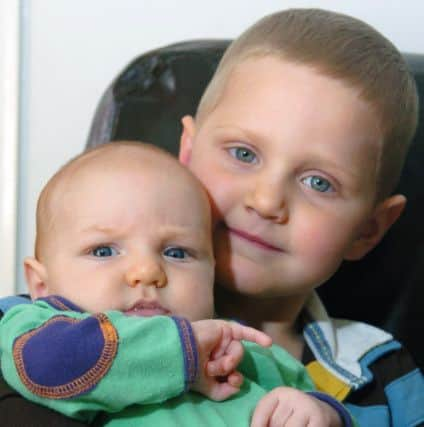

Charity Anthony Nolan found Rory his donor as his brothers were not a match.
Sue says: “When Rory relapsed, he was very poorly. The conditioning chemotherapy wiped out his immune system and we know how close we came to losing him. Rory’s donor found by Anthony Nolan was a 42-year-old German gentleman who kindly donated his bone marrow.
“The cells were harvested from the donor and flown to Manchester where they were given to Rory.”
Advertisement
Hide AdAdvertisement
Hide AdJune this year marked a major milestone for Rory as it was five years since his transplant.
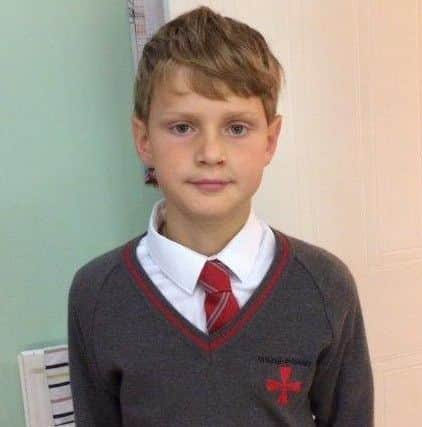

Rory is now a Year 5 pupil at Whittle-le-Woods Church of England Primary School.
Sue says: “Rory missed a lot of his reception year because of being in isolation post-transplant.
“However, he is now doing great. Rory is an incredible young man.We are very proud of him and he always has a smile on his face.
Advertisement
Hide AdAdvertisement
Hide Ad“Rory faces challenges every day but he takes it all in his stride. Rory is a very cheeky chap. He loves football and doing things with his brothers. He loves being part of his family and is happy when he has got everyone around him.We don’t take anything for granted but we are very thankful to be able to enjoy life with Rory. He is an essential part of our family unit.”
Rory is one of 104 faces which make up a campaign supported by nine blood cancer charities - including Anthony Nolan – after battling back to health after his stem cell transplant.Rory is supporting the Make Blood Cancer Visible campaign this September as part of Blood Cancer Awareness Month. The campaign was launched with the unveiling of an installation created by designer Paul Cocksedge.
The piece is made up of 104 three-dimensional life-size sculptured names in Paternoster Square, London, representing the 104 individuals that are diagnosed with blood cancer every day.


Rory says: “Seeing my name was really cool. Being diagnosed with Acute Myeloid Leukaemia was scary. I was only three-years-old and was away from my home for a long time.
Advertisement
Hide AdAdvertisement
Hide Ad“I missed my brothers and my toys. I’m proud to have gone on to start school and make lots of new friends.”
Sue says: “As it’s five years since Rory received his transplant, made possible by Anthony Nolan finding him a bone marrow match, this is a lovely way to mark his transplant anniversary. We want to do all we can to help raise awareness of blood cancer and to encourage people to consider becoming bone marrow donors. It is just a quick swipe of the inside of your mouth to see if you are a match.
“The bone marrow transplant saved Rory’s life. Without it, Rory would not be here today and we are so grateful to his donor.”
The installation has been designed to raise public awareness and highlight the personal experiences of Rory and 103 others who have had treatment for a range of blood cancers.
Advertisement
Hide AdAdvertisement
Hide AdThe installation has been launched alongside new research which reveals one in three blood cancer patients admit that they had never heard of their specific type of cancer before diagnosis.
The YouGov poll, funded by Janssen, also shows that just one in 10 people are aware that there are more than 100 different types of blood cancer and only 12 per cent of people selected blood cancer as one of the top five most commonly diagnosed types of cancer.
Each sculpture is the real name of someone who has been diagnosed with a blood cancer and is sized to perfectly match their height.
The names are arranged to reflect the patterns which occur when people gather in crowds and set in a recurring typeface intended to emphasise their shared experiences.
Advertisement
Hide AdAdvertisement
Hide AdAs a UK charity which finds and matches donors of the correct tissue types with patients who need stem cell transplants, Anthony Nolan cures blood cancer giving patients a second chance.
Henny Braund, chief executive of Anthony Nolan, says: “By making blood cancer visible this Blood Cancer Awareness Month we are celebrating transplant patients who are flourishing and shining the spotlight on the difficulties many face finding support throughout their recovery.
“In sharing inspiring stories of people who have survived blood cancer, we can raise public awareness of their needs and inspire more people to join our stem cell register. This will help Anthony Nolan give a second chance of life to everyone who needs one and ensure they have the support they need to thrive.”
Paul Cocksedge, sculpture designer, says: “This has been an amazing opportunity for the studio and me personally to work on something with such importance.
Advertisement
Hide AdAdvertisement
Hide Ad“Blood cancer has an enormous impact on people’s lives and needs greater awareness.
“We hope this installation is a step towards that.”
Members of the public can interact with the sculptures, read the stories of 104 people who have been diagnosed with blood cancer and follow the campaign on social media using #makebloodcancervisible.
The installation is open until September 30.
CELL STEM TRANSPLANTS: THE FACTS
• If a patient has a condition which affects their bone marrow or blood, then a stem cell transplant may be their best chance of survival. Doctors will give new, healthy stem cells to the patient via their bloodstream, where they begin to grow and create healthy red blood cells, white blood cells and platelets
• About 2,000 people in the UK need a stem cell transplant from a stranger every year
Advertisement
Hide AdAdvertisement
Hide Ad• 90 per cent of donors donate through peripheral blood stem cell collection. This is a simple, outpatient procedure similar to giving blood
• More young men are needed to sign up as they are most likely to be chosen to donate but make up just 15 per cent of the register
• More people are needed from Black, Asian and minority ethnic (BAME) backgrounds to sign up. Only 69 per cent of transplant recipients receive the best match. This drops dramatically to around 20 per cent (one in five of transplant recipients) if you’re from a Black, Asian or ethnic minority background
• It costs £60 to add each new donor to the register so Anthony Nolan always needs financial support
Advertisement
Hide AdAdvertisement
Hide Ad• To join the Anthony Nolan register, you must be 16 to 30 and healthy. Anthony Nolan’s world-leading Research Institute has shown younger donors offer better survival rates for patients
• Anthony Nolan saves the lives of people with blood cancer.
• The charity uses its register to match potential stem cell donors to blood cancer and blood disorder patients in need of stem cell transplants.
• It also carries out pioneering research to increase stem cell transplant success and supports patients through their transplant journeys.
• Every day, Anthony Nolan gives three people a second chance at life.
• Find out more at www.anthonynolan.org